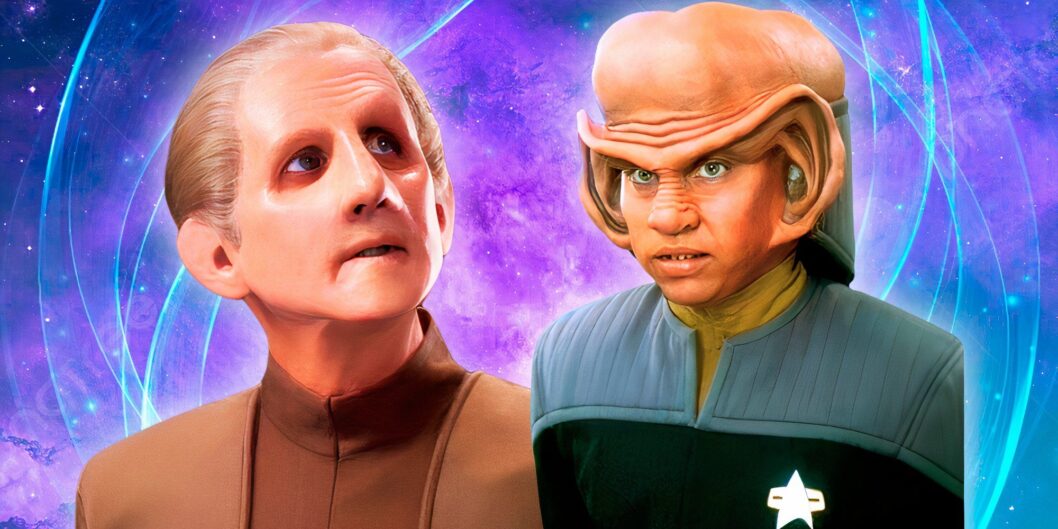The Transformative Impact of "Heart of Stone" on Star Trek: Deep Space Nine
Star Trek: Deep Space Nine has long been celebrated within the Star Trek canon, but it was the pivotal episode "Heart of Stone" that propelled the series into a new realm of storytelling. This exploration of character depth—particularly through the experiences of Nog and Odo—marks a significant point in the series’ progression.
A Journey Through the Stars
The writer’s journey began with Star Trek: The Next Generation (TNG) and later revisited Star Trek: The Original Series. However, it was during the syndication of Deep Space Nine in the 1990s that the series truly captured the heart of fans. The transition into the third season introduced iconic elements such as the USS Defiant and new antagonists, the Dominion. The turning point, however, was the episode "Heart of Stone," which aired in season three, episode fourteen.
Nog’s Ambitious Dream
One of the episode’s standout moments is when Nog, played by Aron Eisenberg, requests the sponsorship of Commander Benjamin Sisko (Avery Brooks) to join Starfleet Academy. Initially seen as a prank, Nog’s request becomes profoundly serious as he reveals he wants to escape the limitations of his Ferengi heritage. "I don’t want to end up like my father," he states, reflecting a deep desire for growth and potential.
Eisenberg’s performance adds emotional weight, allowing viewers to see Nog not just as a Ferengi but as a character striving for a greater purpose. This scene not only reshapes Sisko’s perception of Nog but also elevates audience empathy toward him, positioning Nog as a relatable underdog.
Odo’s Unrequited Love
Simultaneously, the episode delves into Odo’s (Rene Auberjonois) unrequited love for Major Kira Nerys (Nana Visitor). Captured and manipulated by the Female Changeling (Salome Jens), Odo is forced to confront his feelings in a deeply vulnerable moment. His admission of love is heartbreaking and contrasts his stoic exterior. "Heart of Stone" presents unrequited love in a manner that resonated with viewers, showcasing Odo’s complexity and inner turmoil.
Kira’s eventual reciprocation of Odo’s love adds layers to their relationship and influences the dynamic between characters throughout the series.
The Aftermath: A Soft Reboot
"Heart of Stone" not only deepened character relationships but also facilitated a narrative shift for the series. Following this episode, Deep Space Nine underwent a soft reboot in season four, adding Lt. Commander Worf (Michael Dorn), which injected new life into the storyline. Changes in Sisko’s portrayal—particularly his decision to shave his head—further revitalized the character.
Fans note that episodes like "The Visitor," "Far Beyond the Stars," and "In the Pale Moonlight" continued to build on this character depth, establishing Deep Space Nine as a hallmark of sophisticated television storytelling.
The Lasting Legacy
The dual narratives of Nog and Odo in "Heart of Stone" resonate strongly even in contemporary discussions about the series. Addressing themes of aspiration and unrequited love, the episode became a foundation upon which Deep Space Nine constructed a legacy of emotional narrative depth.
As Star Trek: Deep Space Nine progressed, it not only differentiated itself from its predecessors by exploring the intricacies of character relationships, but it also challenged larger societal norms.
The initial impressions of the series may have focused on space exploration, but DS9’s enduring legacy is its commitment to the exploration of the human condition. It taught fans that the most profound journeys could occur within oneself, long after the stars have faded from view.
In conclusion, "Heart of Stone" serves as a fundamental pillar of Star Trek: Deep Space Nine, highlighting poignant character arcs and themes that still resonate today. Through Odo and Nog, audiences were treated to a narrative depth that many series would struggle to achieve, securing Deep Space Nine’s place as a classic in television history.









